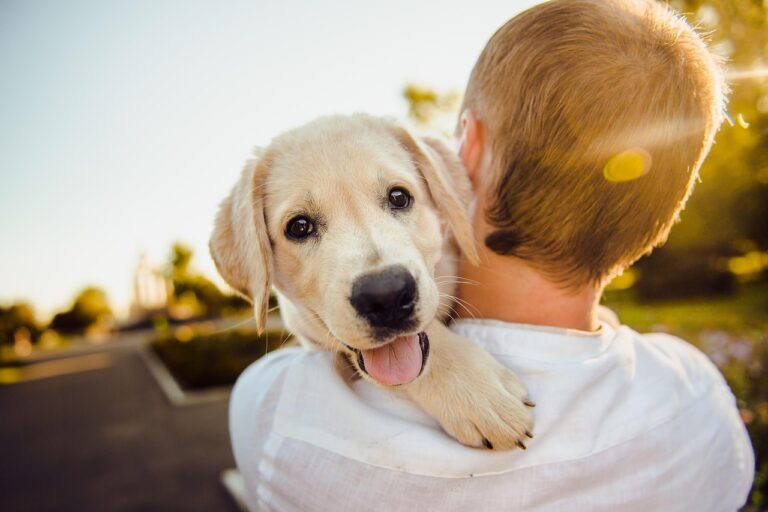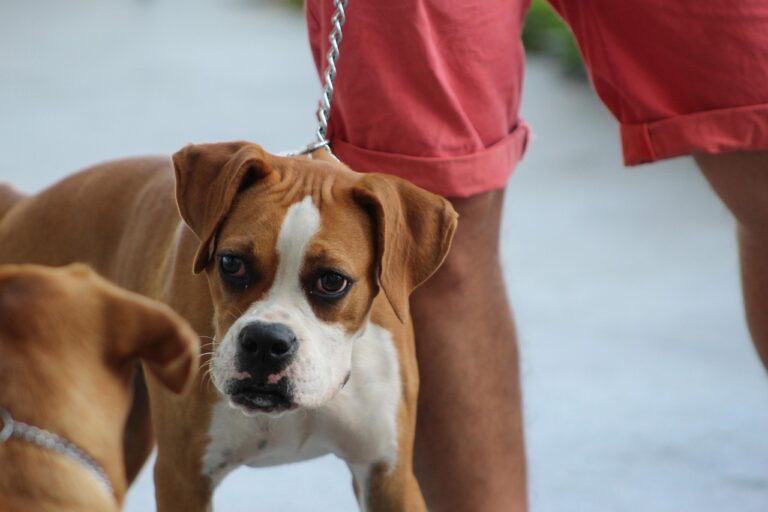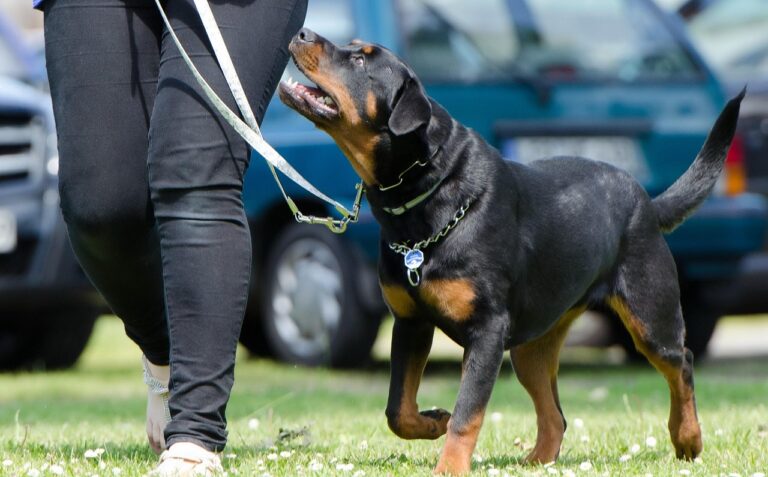
Bringing a rescue dog into your home is an exciting journey, but it requires careful preparation to ensure a smooth transition for your new furry friend. The first step in this process is dog-proofing your living space. This means identifying potential hazards that could endanger your pet.
For instance, securing electrical cords, removing toxic plants, and storing chemicals and small objects in high cabinets are essential to safeguard your pet’s health and safety. Additionally, assess your furniture and belongings to minimize damage; relocating fragile items or valuable possessions out of the dog’s reach can alleviate stress on both ends.
Next, it is vital to establish a designated space for your rescue dog. This area should ideally be quiet, comfortable, and free from distractions, allowing your new companion to relax and acclimatize. Include a cozy dog bed, blankets, and some toys to create an inviting atmosphere. A crate can also be a helpful tool during this adjustment phase, providing your rescue dog with a sense of security and a private space to retreat when feeling overwhelmed.
Furthermore, gathering the necessary supplies is crucial before your dog arrives. Essential items include high-quality dog food, water bowls, leashes, grooming tools, and interactive toys.
Having these supplies ready will not only make your life easier but also help your rescue dog feel more at home. Lastly, it is important to maintain a calm and peaceful environment once your new pet arrives. Playing soft music or speaking in a soothing voice can assist in easing their nerves, allowing them to adjust more comfortably to their new surroundings.
With these preparations in place, you will provide a warm welcome that makes your rescue dog feel loved and safe as they begin this new chapter in their life.

Bringing a rescue dog into your home is an incredibly rewarding experience, but it is essential to approach the first day with care and sensitivity. This initial period is crucial for establishing a foundation of trust and comfort between you and your new furry family member. Start by giving your dog time to acclimate to their new environment. Allow them to explore their surroundings at their own pace. This will not only help them feel more secure, but it will also give you a chance to observe their behavior and preferences.
During their exploration, it is important to maintain a calm and positive atmosphere. Engaging in gentle verbal reassurances can go a long way in helping your dog feel safe. Remember, your rescue dog may experience a range of emotions, including fear or anxiety, particularly if they have had traumatic experiences in the past. Using positive reinforcement, like treats and praise, can encourage them to associate their new home with positive experiences. This technique fosters a bonding experience that nurtures trust and comfort.
Establishing a consistent routine from day one will also be beneficial. Predictable schedules surrounding feeding, bathroom breaks, and playtime can provide a sense of security for your dog. A structured environment helps alleviate confusion and reinforces their understanding of what to expect each day. Pay attention to your dog’s body language; signs such as a wagging tail, relaxed posture, or even playful behavior indicate they are beginning to feel comfortable.
Conversely, if they seem withdrawn, anxious, or fearful, it is crucial to give them space and time to adjust. Building trust is a gradual process, but by ensuring a nurturing and consistent environment, you are setting the stage for a fulfilling relationship with your rescue dog.

Establishing a consistent routine is fundamental to ensuring a smooth transition for your rescue dog into his new home. A well-structured daily schedule not only provides a sense of security but also fosters a trusting relationship between you and your new furry friend. Begin by setting regular times for feeding your dog.
Consistency in mealtimes helps regulate digestion and gives your dog something to anticipate. It is advisable to choose high-quality dog food, as proper nutrition plays a pivotal role in your dog’s overall health and happiness.
Beyond feeding, regular bathroom breaks should be incorporated into the daily routine, especially in the early days. This ensures your rescue dog develops good habits and helps mitigate accidents inside the house. Initially, taking your dog outside frequently will minimize stress and allow him to acclimate to his new surroundings effectively. As your dog settles in, you can gradually extend the intervals between bathroom breaks.
Exercise is another critical element of a successful routine. Daily walks not only provide necessary physical activity but also stimulate mental engagement through exploration and exposure to new sights, sounds, and smells. Depending on your dog’s energy level and breed, aim for multiple outings each day. Socialization, an equally important component, involves introducing your dog to other pets, people, and different environments. This process should be gradual to avoid overwhelming your rescue dog. Positive interactions build confidence and ease any anxiety he may feel in unfamiliar situations.
By skillfully integrating these elements into your dog’s daily routine, you lay
the foundation for a solid, trusting relationship. A structured schedule addressing feeding, bathroom necessities, and social outings not only meets your dog’s needs but also elevates his overall well-being while adjusting to a new life. This methodical approach creates an environment where your rescue dog can thrive.

Training your rescue dog is a fundamental step towards establishing a harmonious relationship and fostering positive behavior. It is essential to start with basic commands that facilitate effective communication between you and your pet.
Commands such as “sit,” “down,” “come,” and “come” are not only crucial for safety but also help to build a trusting bond. By teaching these commands, you set clear expectations for your dog’s behavior, contributing to a well-mannered companion.
The effectiveness of training typically relies on the principle of positive reinforcement. This approach involves rewarding your dog for good behavior rather than punishing undesirable actions. Rewards can range from verbal praise and petting to treats or playtime, depending on what motivates your dog.
Positive reinforcement helps create a positive learning environment, making your training sessions more enjoyable and effective for both of you. Engaging activities like interactive games or agility exercises can keep your dog mentally stimulated while reinforcing learned commands.
Consistency is key when training a rescue dog. Reinforce commands with regular practice, ensuring that all household members are on the same page with the training cues. Patience is equally important; it may take time for your dog to adapt to new commands, especially if they have a challenging past or behavioral issues. If you encounter specific challenges or if your dog exhibits difficulty in learning, it may be beneficial to seek help from professional trainers or behaviorists.
They can provide tailored strategies and insights to aid in overcoming obstacles, ensuring a smoother training process for you and your furry friend.


Is your furry friend feeling anxious, stressed, or overwhelmed? Our 432 Hz Dog Relaxation Music is specially designed to soothe your dog’s mind, body, and soul.
Known as the “miracle tone,” 432 Hz is a natural frequency that promotes deep relaxation, balance, and harmony—making it perfect for dogs who need a little extra calm in their lives.
Why 432 Hz is Good for Dogs:




Whether your dog is a high-energy pup or a senior needing comfort, our 432 Hz Dog Relaxation Music is here to create a serene atmosphere they’ll love. Press play, sit back, and watch your furry friend drift into a state of pure bliss.
Perfect for:
Anxious or stressed dogs
Rescue dogs adjusting to new homes
Puppies learning to settle
Senior dogs needing comfort
Let the power of 432 Hz transform your dog’s world into a wagging haven of calm.
A short video click below or view here This will take you to our dog relaxation music therapy page
Bringing home a rescue dog is an exciting and heartwarming experience, but it’s also important to be prepared to ensure a smooth transition for both you and your furry friend. Here’s a guide to the first things you need to do and consider when welcoming your new rescue pup:
By following these tips and showering your new furry friend with love and understanding, you can ensure a smooth and happy transition into their forever home!
It’s essential for Dog parents like you to know certain basic factors that determine your relationship with your Dog and can go a long way in training him effectively.
Before you begin training your Dog, it is absolutely essential that you build a loving bond with him. This is important as it helps you to understand his needs and instincts and also allows your Dog to have complete trust in you.
Know more about Dog care from this free mini course
Let us see how…….
Building a bond with your Dog is the first and the most crucial step involved in training him successfully. As soon as you bring your Dog home, you must first try to develop a caring and loving relationship with him in order to win his trust and confidence.
When Dogs are secure in the knowledge that they belong to the family, they are more likely to respond better to their owners’ training commands. Just like with any relationship, there must be mutual trust and respect between you and your Dog.
Trust takes time to develop and respect comes from defining boundaries and treating any breach of those boundaries with firmness and fairness.
Without enforceable limitations, respect can’t be developed. And when there is no respect, building a bond with your Dog is almost impossible.
Spend quality time together
Take him out in the world and experience life together
Establish and promote a level of mutual respect, and
Develop a way of communicating to understand each other’s needs.
Building a bond with your Dog will not only help you manage him better but will also make your Dog calm, quiet and an extremely well-adjusted pet.
Love Your Dog and He Will Love You back
Once you’re succesful in building a bond with your Dog, you can rest assured that training him and teaching him new and clever tricks will be a cakewalk.
Learn how to bond with your Dog with this free mini course.
Your Dog’s learning period can be divided into five phases:
The Teaching Phase – This is the phase where you must physically demonstrate to your Dog exactly what you want him to do.
The Practicing Phase – Practice makes Perfect. Once a lesson is learnt, practice with your Dog what you have just taught him.
The Generalizing Phase – Here you must continue practicing with your Dog in different locations and in an environment with a few distractions. You can take your Dog out for a walk, or to a nearby park and command him to practice whatever you’ve taught him.
Practicing the learned lessons in multiple locations and in the presence of small distractions will help him learn and retain lessons better .
The Testing Phase – Once you’re sure that your Dog has achieved almost 90% success….he responds correctly almost every time you give a command, you must start testing his accuracy in newer locations with a lot of distractions.
Example: Take him to the local shopping mall and ask him to obey your command. He may not come up with the correct response the very first time you do this, but you must not lose hope.
The idea is to test your Dog to see how he responds in an environment which is new to him. Set-up a situation where you are in control of the environment and your Dog.
There are only 2 possibilities:
Your Dog succeeds!!! (Trumpets please!)
In case your Dog fails, re-examine the situation. Review and/or change your training. Then try testing again.
Keep on testing until he succeeds. Follow the rule of the 3 Ps – patience, persistence, praise.
Internalizing Phase – Finally, comes the extremely rewarding phase where your Dog does everything he is taught to do even without your commands.
Remember:
Never scold your Dog if he fails. It’s not his fault. You have failed as a trainer!
You must be patient and persistent for your efforts to show rewards.
Appreciate and love your Dog when he does it right! A little encouragement will work wonders for your Dog.
Dog Training is easy when you do it right.
Learn how to train your Dog better with this free mini course.
Copyright (c) 2018 TrainPetDog.co